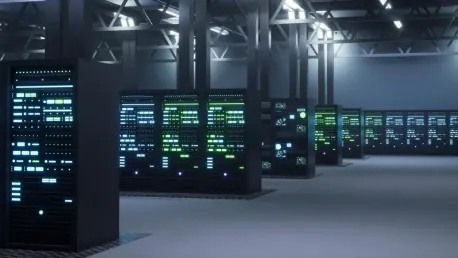Listen to the Article
There are over 900 wireless telecommunications carriers in the US alone, servicing millions of clients. Each of these companies has a data center dedicated to facilitating content delivery and mobile cloud services. These centers consume large amounts of electricity due to three main functions, the constant running of servers, cooling systems, and security infrastructure.
As the world becomes more interconnected and the industry continues to grow, the strain on energy resources becomes more apparent. Data centers account for almost 3% of global energy use, and as additional technologies integrate with telecommunication, this number is set to increase.
Take a closer look at their current state and how telecom providers can improve their sustainability in this article.
An Overview of Telecom Data Centers
With increasing competition over customers, telecommunication providers are increasingly offering new and novel solutions. With each new connectivity offering comes rising infrastructure power needs, which impact operational expenses. One of the ways data center administrators attempt to reduce utility costs is by meeting the power requirements of central processing units, storage, and cooling systems.
The utility costs of these centers are substantial. Managers and organizations are always searching for methods to lower energy costs and raise overall energy efficiency as part of their efforts to address IT expenses.
Managers may enhance the energy efficiency of their data centers in several ways, given the multitude of infrastructure components that require electricity. Adjusting fan speeds, storage hardware, cloud infrastructure use, and even operational temperatures are a few of these choices. When combined, these little adjustments may significantly lower power use and save energy.
Although there is a great deal of potential for efficiency gains, administrators should first get administrative approval and explain any dangers before implementing any of the following ways to lower data center power usage. An efficient, high-density infrastructure can quickly heat up the rooms if it is not planned properly.
Change to Variable Speed Fans
The two main consequences of data centers operating 24/7 is that they consume massive amounts of energy and generate a lot of heat. In order to avoid malfunction due to excessive heat, cooling is an important factor. However, efforts to cool them down may also add to the energy consumption.
A more eco-friendly way to cool down these facilities is to opt for variable-speed central processing unit fans, which reportedly can lower energy use by 20%.
Variable-speed fans only consume energy when they’re in use, and only at the speed required. This is usually determined using thermostatic measurements. These fans slow down when the central processing unit is idle which reduces power consumption when blades are not rotating.
Using Liquid Cooling to Improve Sustainability
Another popular, environmentally friendly method to cool down data centers is the application of cooling liquid. This acts in a similar way to a car’s radiator, reducing heat using a liquid rather than a fan, and is typically used in high-performance systems.
Liquid cooling systems are considered to be more effective than their rotator-fan counterparts, and are a better fit ergonomically, as they’re also quieter. By using a liquid cooling system, central processing units produce less heat and this has the compound effect of minimizing energy consumption.
Reassessing Data Center Temperature
Reevaluating the optimal temperature for data centers is another approach to improving energy efficiency. Historically, computer equipment needed consistent cooling to maintain proper performance. However, advancements in technology have led to the development of systems that can operate effectively at much higher temperatures.
Today, data center infrastructure providers claim that even at 77 degrees Fahrenheit, current servers can function well. Nevertheless, servers in certain facilities are kept at temperatures that are almost 65 degrees Fahrenheit.
An administrator can instantly reduce the cooling system’s power consumption without affecting server performance by raising the surrounding temperature by a few degrees. There is no need for overhead or expenditure, but to prevent unpleasant surprises, it is advised to closely monitor server and temperature as well as implement trial programs.
It is not appropriate for administrators to increase the data center’s temperature at random. The American Society of Heating, Refrigerating, and Air-Conditioning Engineers provides recommendations on the required operating criteria for temperature, humidity, and energy consumption.
Optimizing Storage Devices
While using larger, slower drives could be beneficial, high-demand transaction processes like financial databases or vital round-the-clock systems shouldn’t use this strategy. Administrators can swap out speedier units for lower-energy drives if they assign a part of the majority of unneeded data to a lower storage tier.
Reducing the number of drives results in lower energy and heat production. One of the drawbacks is that it can be costly, as most organizations extend storage capacity every quarter, but the sustainability pros far outweigh the cons.
Additionally, organizations ought to employ the power management profile of the operating system to switch the hard disk to standby mode while it’s not in use. As a result, the hard disk will last longer and use less power.
Switching to Solid State Drives
Organizations should also consider replacing hard drives with Solid State Drives when possible. These usually use significantly less power than hard drives while providing greater input and output operations per second.
Utilize Cloud-based Services
Telecom providers looking to drastically reduce their energy consumption may consider more permanent methods. Moving IT workloads to the cloud or a managed service provider transfers power consumption to the host facility. Many organizations understand that large providers are often highly efficient in maximizing the use of every kilowatt. These service providers typically focus on delivering optimal power value to their clients while keeping costs as low as possible.
Conclusion
By implementing some simple yet effective measures, data center administrators can significantly enhance energy use and reduce costs. These steps not only help administrators lower power usage but also improve overall operational efficiency. Although these improvements may require upfront investment and approval from management, long-term energy savings and economic benefits are worthwhile. In summary, by applying these strategies comprehensively, data centers can achieve more environmentally friendly and cost-effective operations.









